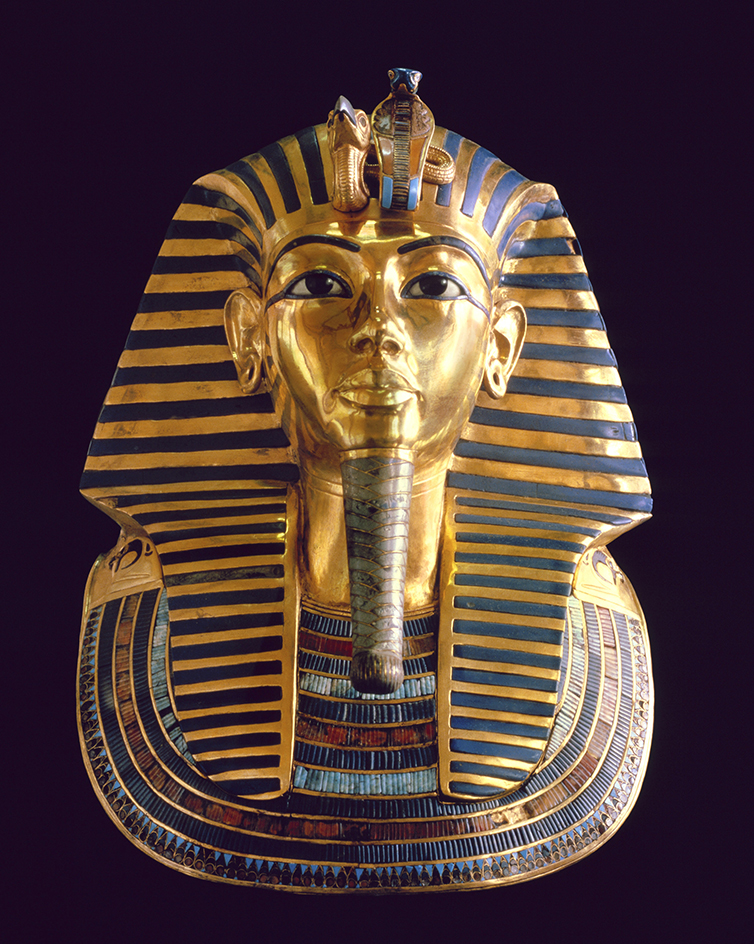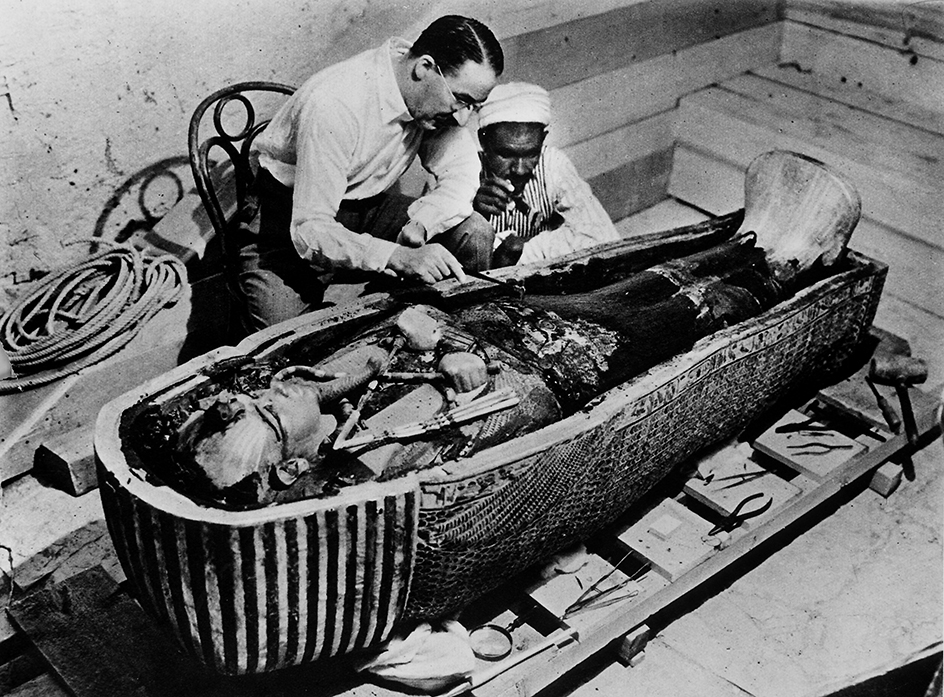Tutankhamun << `toot` ahngk AH muhn >> served as king of Egypt from about 1332 B.C. until his death around 1322 B.C. His name is also spelled Tutankhamen or Tutankhamon. Today, some people refer to him informally as Tut or King Tut. His reign was unimportant. But interest in Tutankhamun began in 1922, when the British archaeologist Howard Carter discovered his tomb. The tomb had not been opened since ancient times. It still contained most of its treasures. It is the only tomb of an ancient Egyptian king to be discovered almost completely undamaged. See Carter, Howard.

Tutankhamun became king at about the age of 9. He probably received much help from Ay, his vizier (minister of state). Tutankhamun was the son of King Akhenaten and Akhenaten’s sister. Tutankhamun’s original name was Tutankhaten, meaning the living image of Aten or the life of Aten is pleasing. Akhenaten had made Aten the only god of Egypt. He wanted Egyptians to stop worshiping the chief sun god Amun and other traditional gods. But many Egyptians, including the powerful priests devoted to Amun, rejected the worship of Aten. About four years after becoming king, Tutankhaten took the name Tutankhamun and restored Egypt’s old religion. See Akhenaten.
Historians believe Tutankhamun died at about the age of 18. Examinations of his mummy show that he suffered from many ailments. These include foot deformities; cleft palate, a birth defect marked by a split in the roof of the mouth; and malaria. He also suffered a broken leg, which he may have received in a fatal chariot accident. Ay followed Tutankhamun as king. He held Tutankhamun’s funeral in the Valley of the Kings, a burial center at Thebes. Horemheb, a leading general, followed Ay as king. Horemheb and later rulers destroyed or removed all monuments built by or in honor of Tutankhamun and others who had accepted Aten as Egypt’s chief god. Partly because of these actions, little was known about Tutankhamun until Carter’s discovery.
Loading the player...Carter on discovering the tomb of Tutankhamun
Carter searched for Tutankhamun’s tomb for nearly six years. He finally discovered that its entrance had been hidden by debris from another excavation. Tutankhamun’s four-room tomb contained more than 5,000 objects, including many beautiful carved and gold-covered items. A magnificent lifelike gold mask of Tutankhamun covered the head and shoulders of the royal mummy.

Among the items discovered were luxurious chests, thrones, beds, linens, clothing, necklaces, bracelets, rings, and earrings. Carter also found chariots, bows and arrows, swords, daggers, shields, ostrich feather fans, trumpets, statues of Tutankhamun and many Egyptian gods, figures of animals, models of ships, toys, games, and storage jars containing precious oils. The ancient Egyptians believed in a life after death, called the afterlife. They had their favorite possessions and practical objects buried with them for use in the afterlife. Most of the items found in Tutankhamun’s tomb are now displayed in the Egyptian Museum in Cairo.
Loading the player...Notes played on Tutankhamun's trumpet
One of the most informative items in the tomb was a note on the handle of the king’s fan. The note indicated that the young Tutankhamun hunted at Heliopolis, near modern Cairo. Wine-jar labels indicated the length of Tutankhamun’s reign. Several objects included scenes of Tutankhamun slaying foreign enemies in battle. But scholars doubt that these scenes pictured actual events.

See also Carnarvon, Lord; Carter, Howard; Egypt, Ancient; Mummy.
